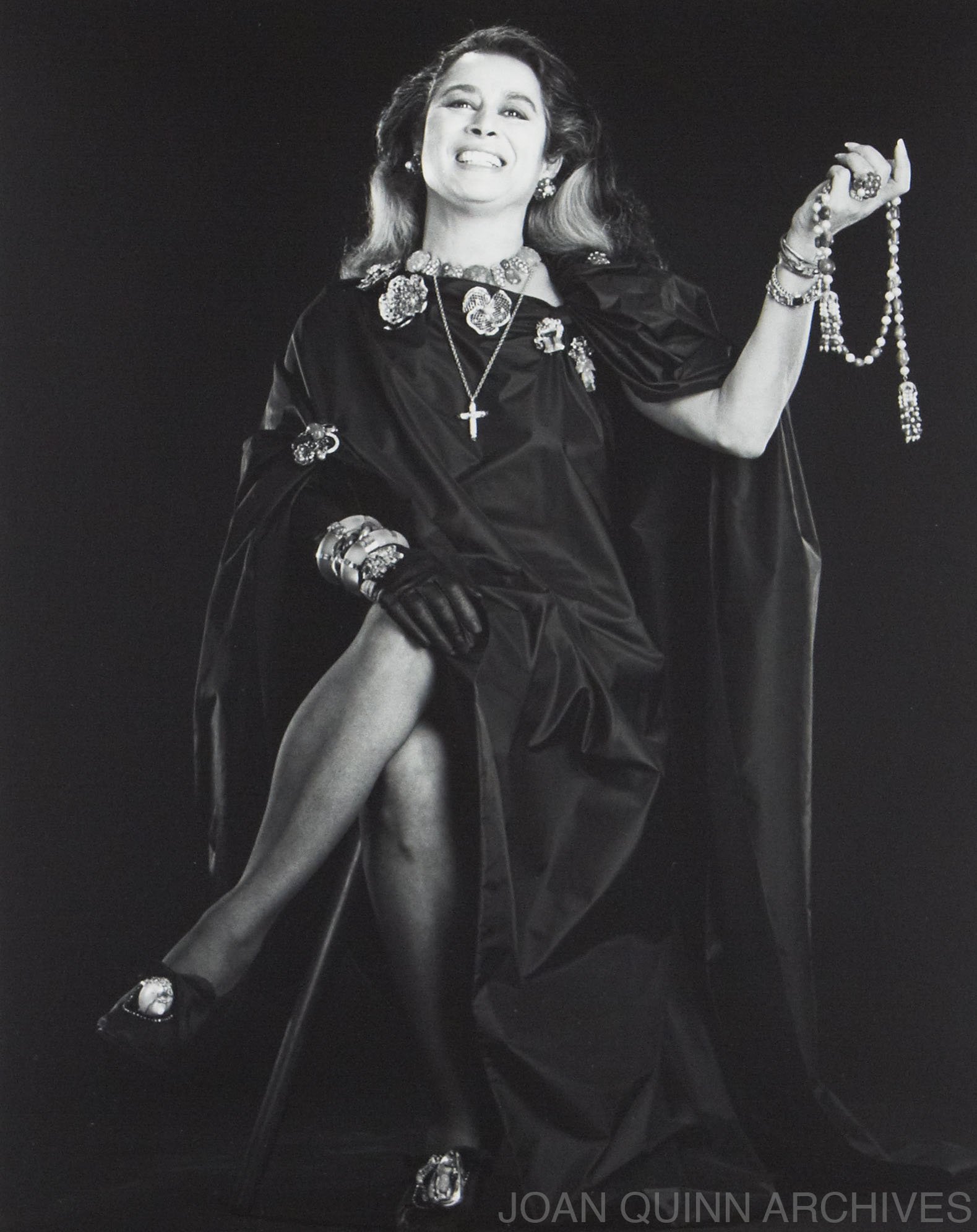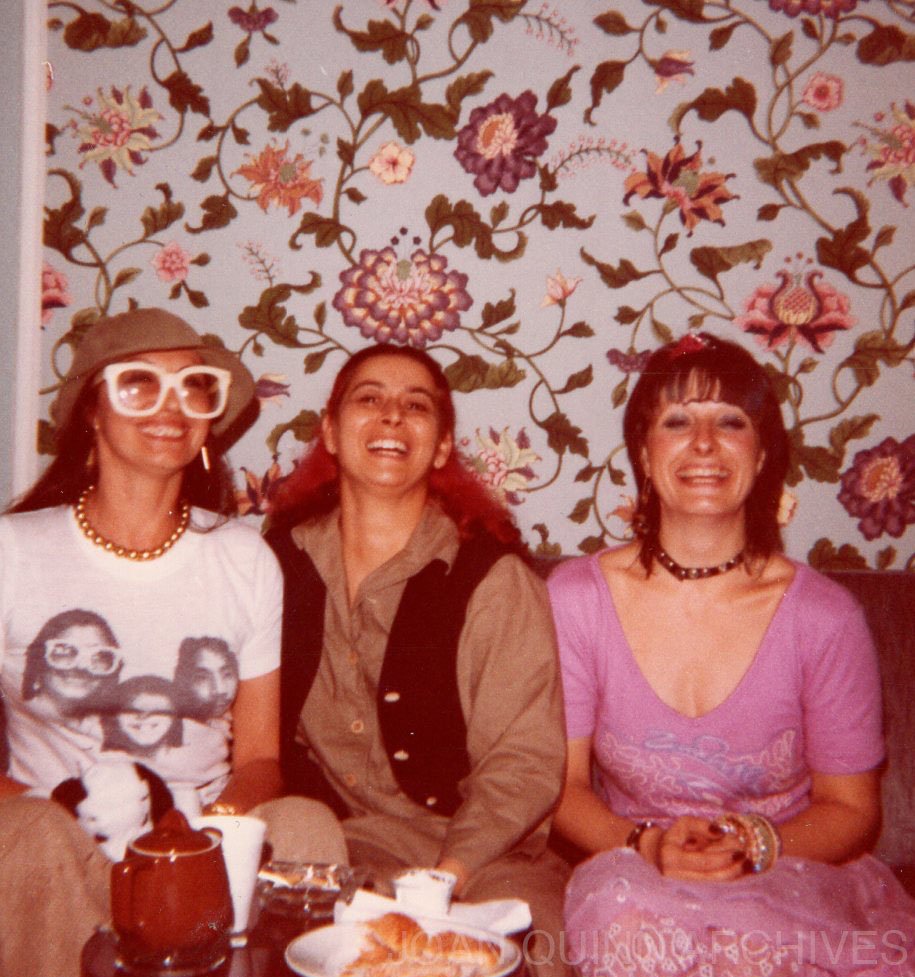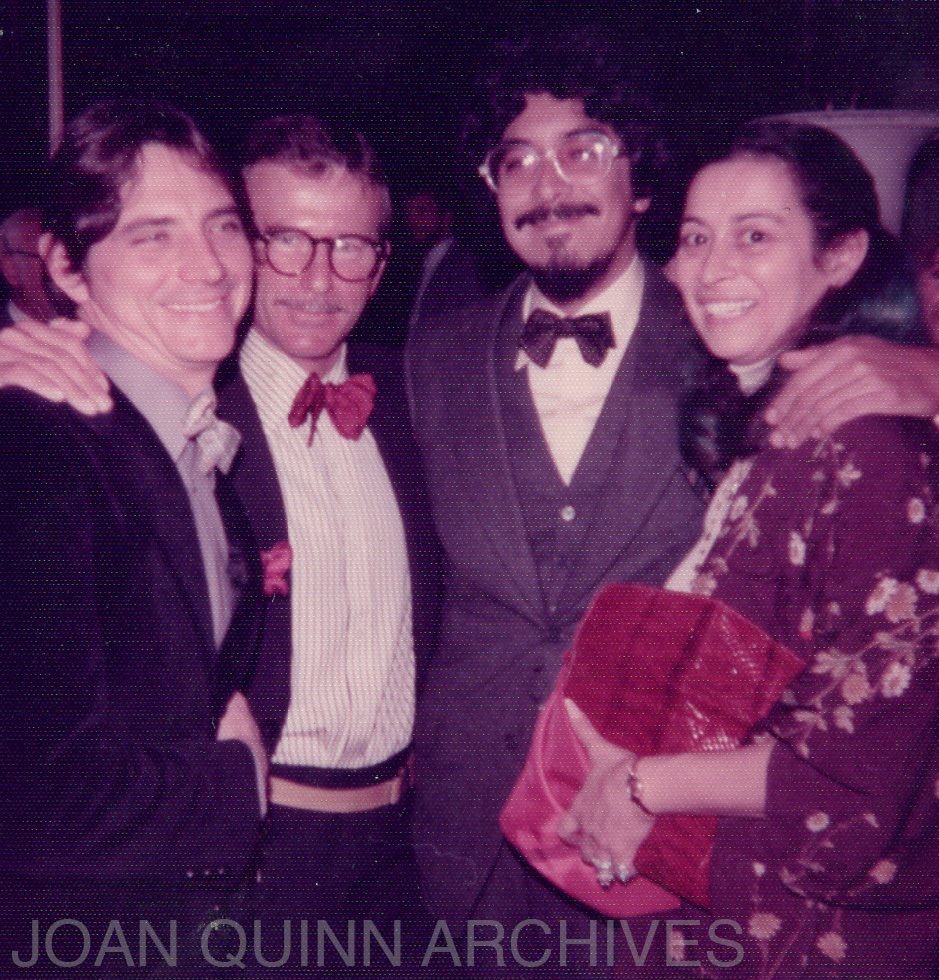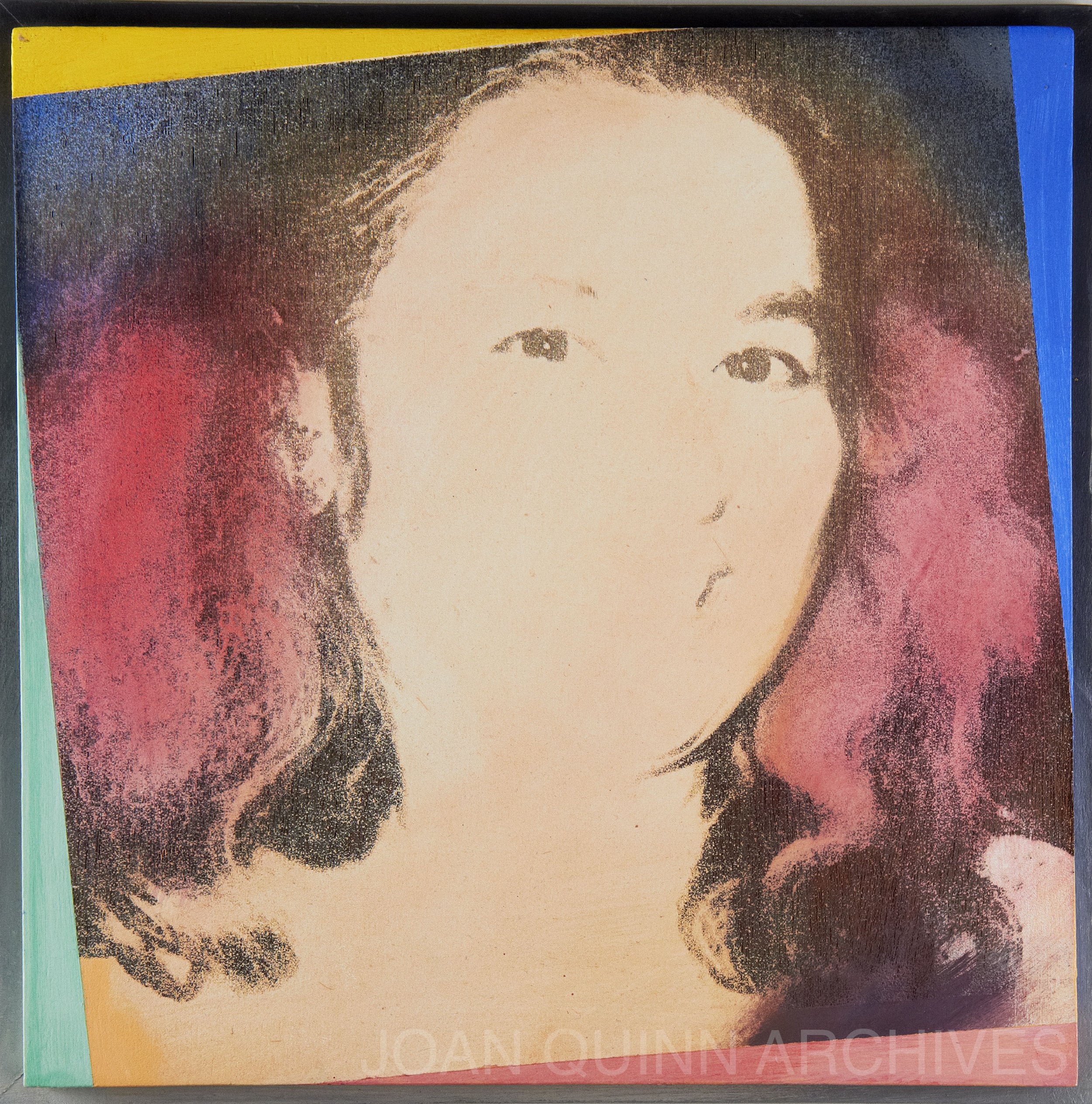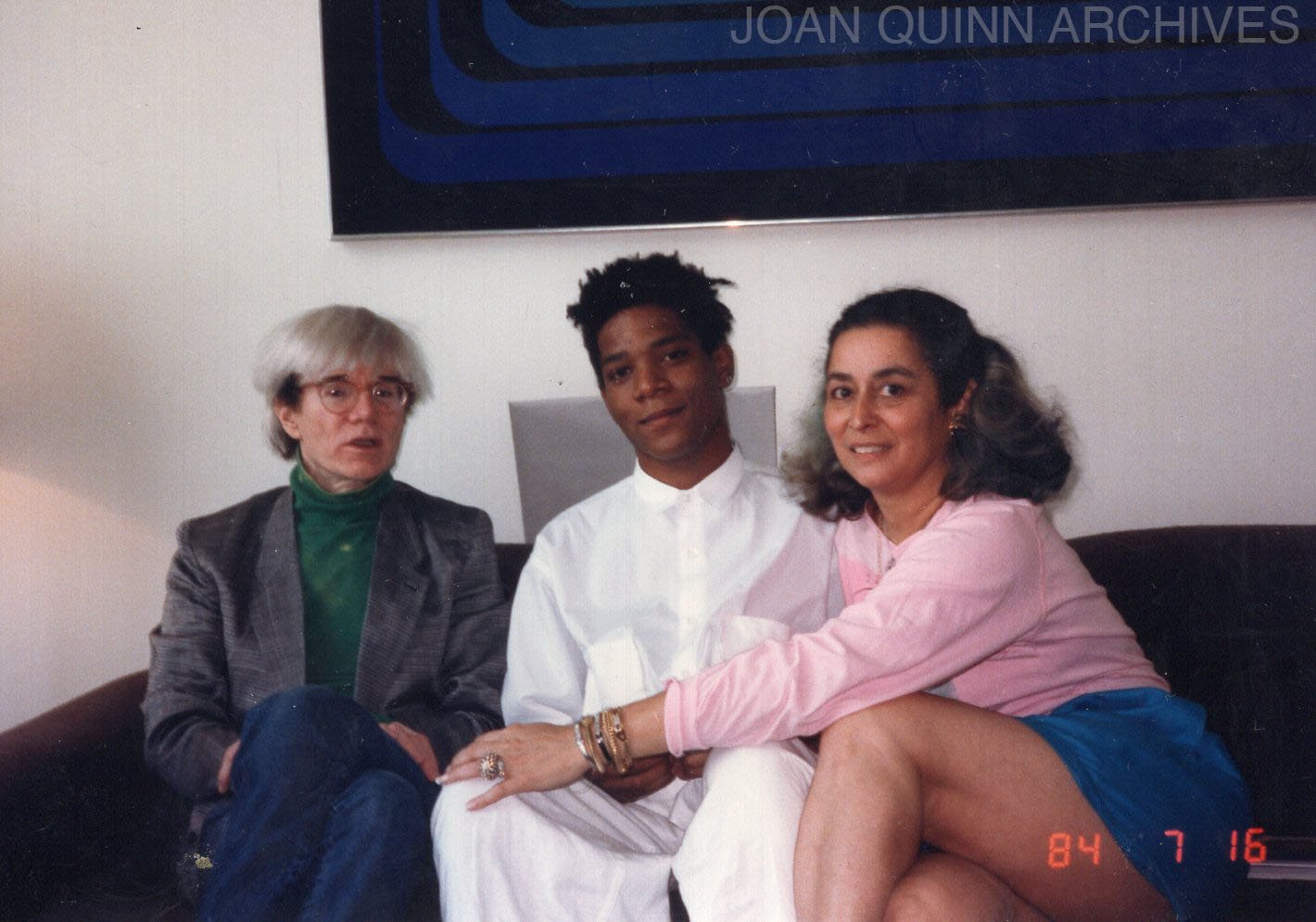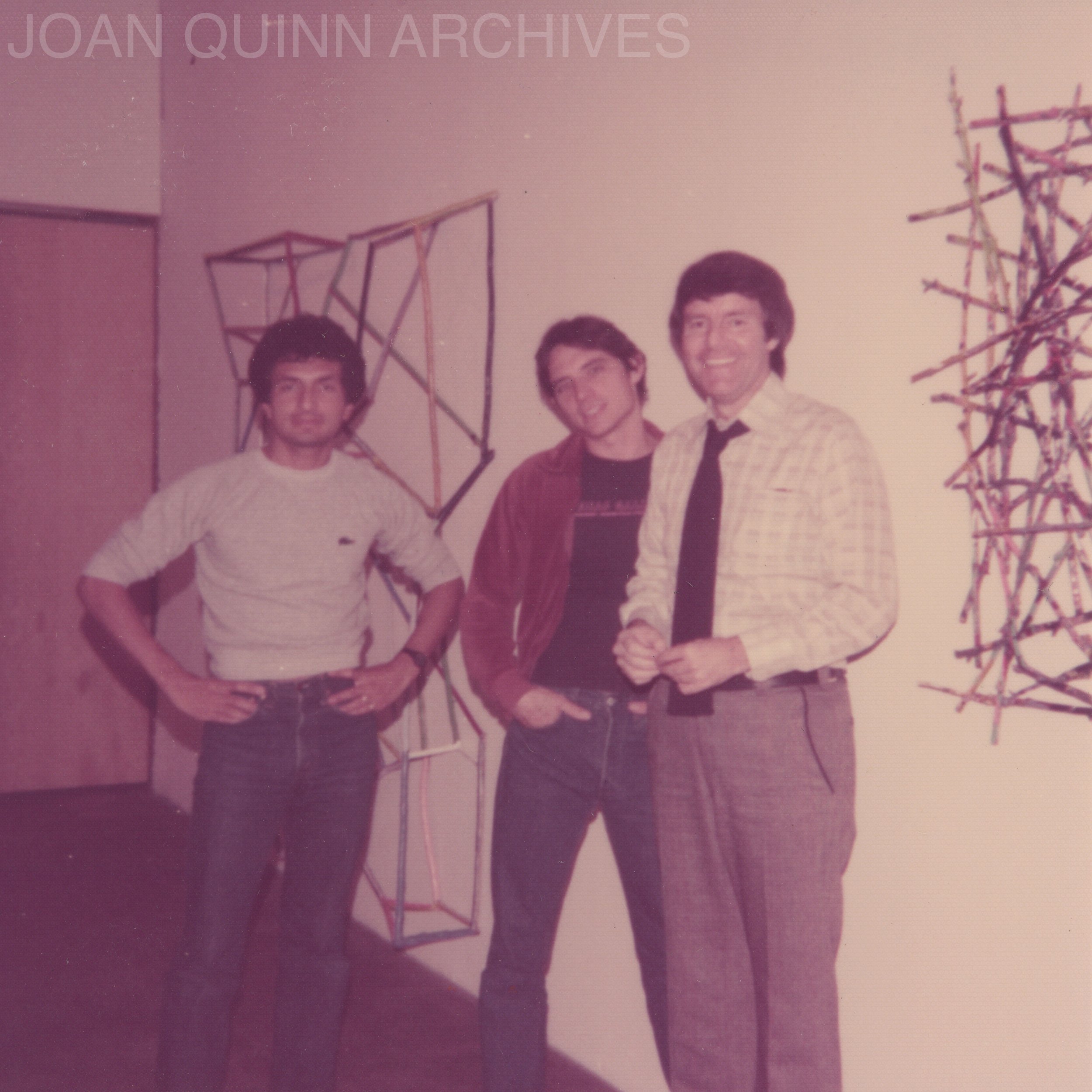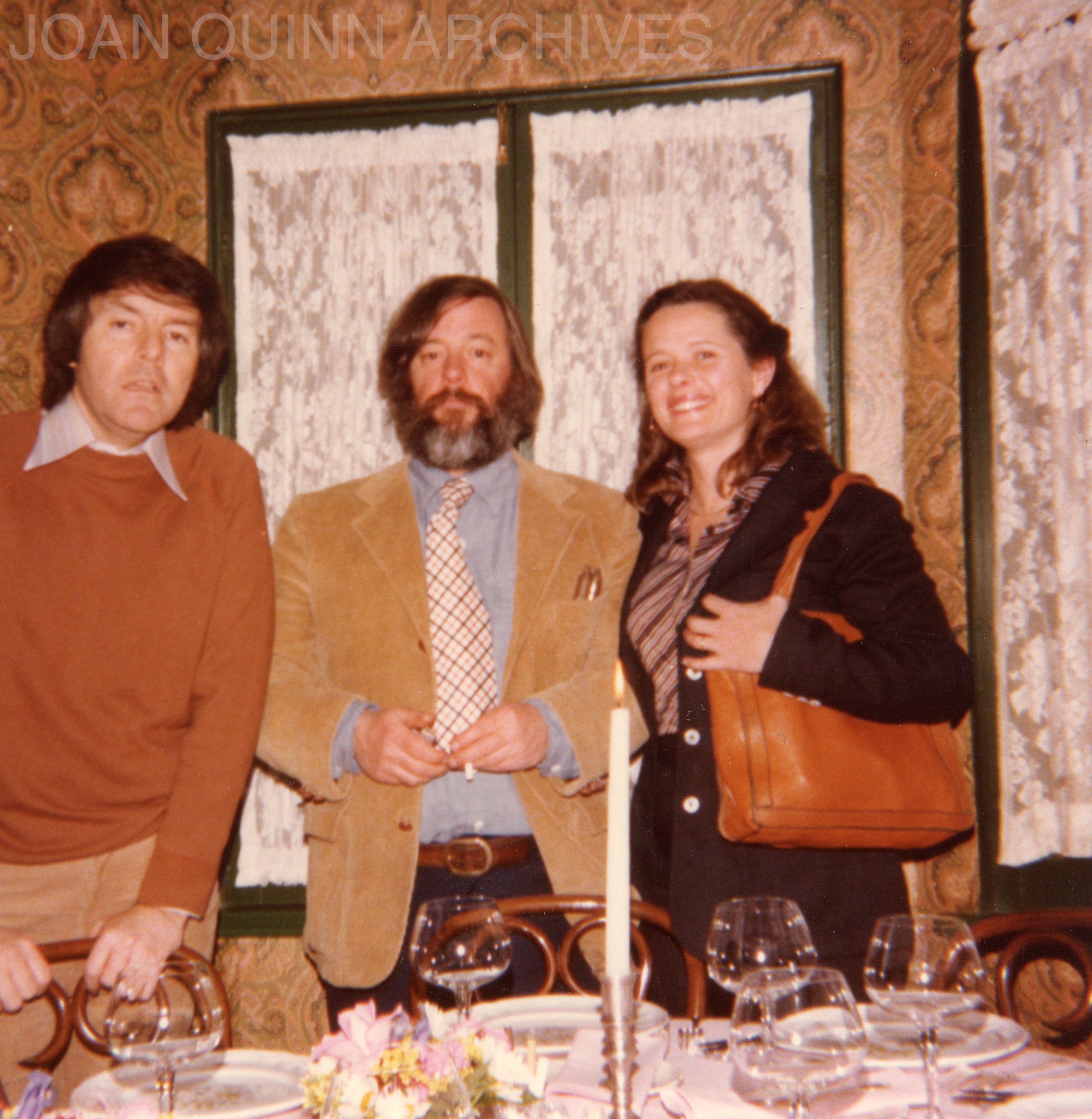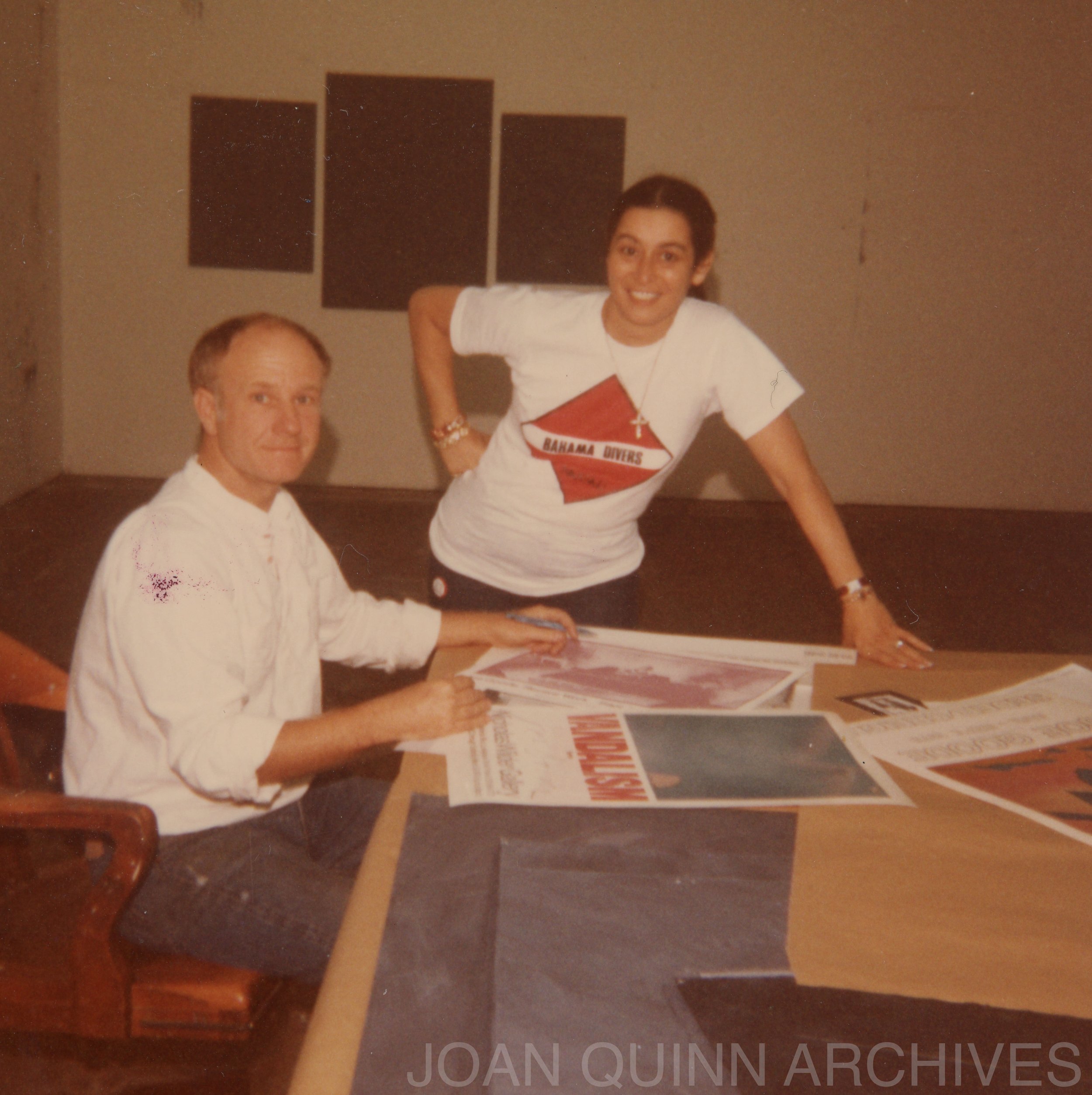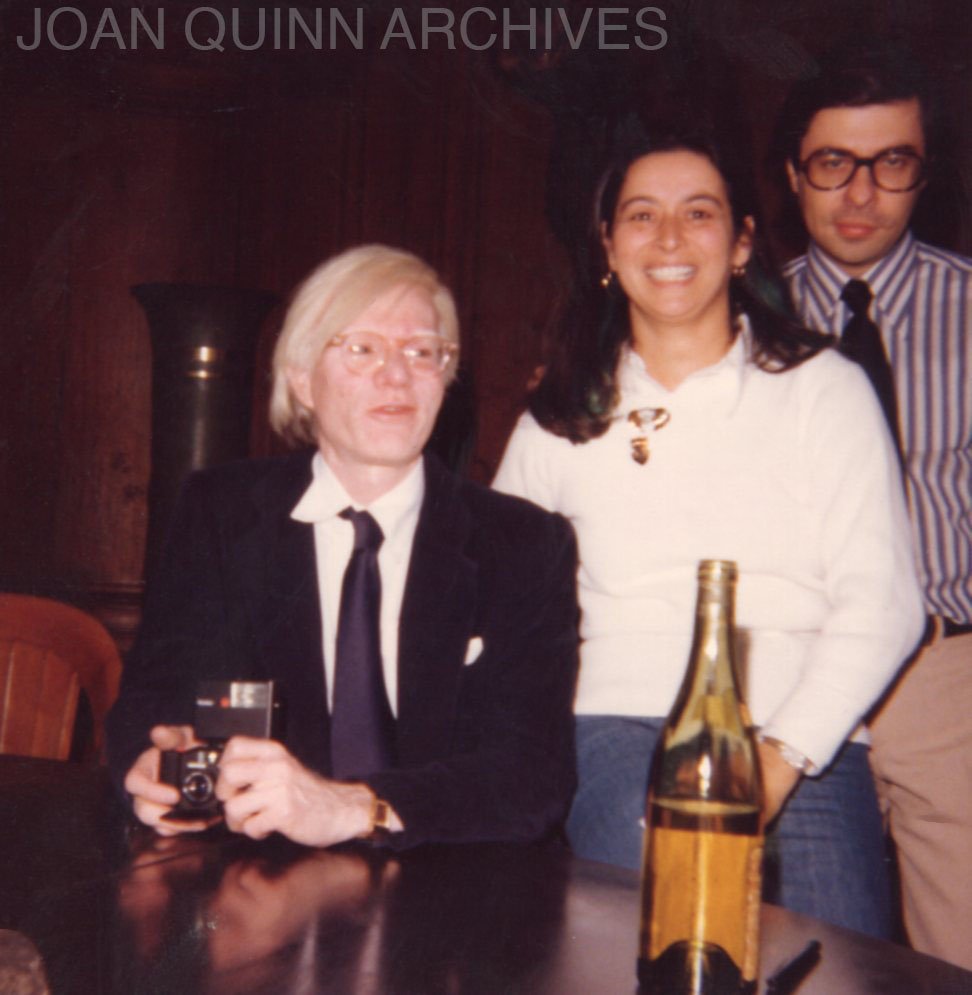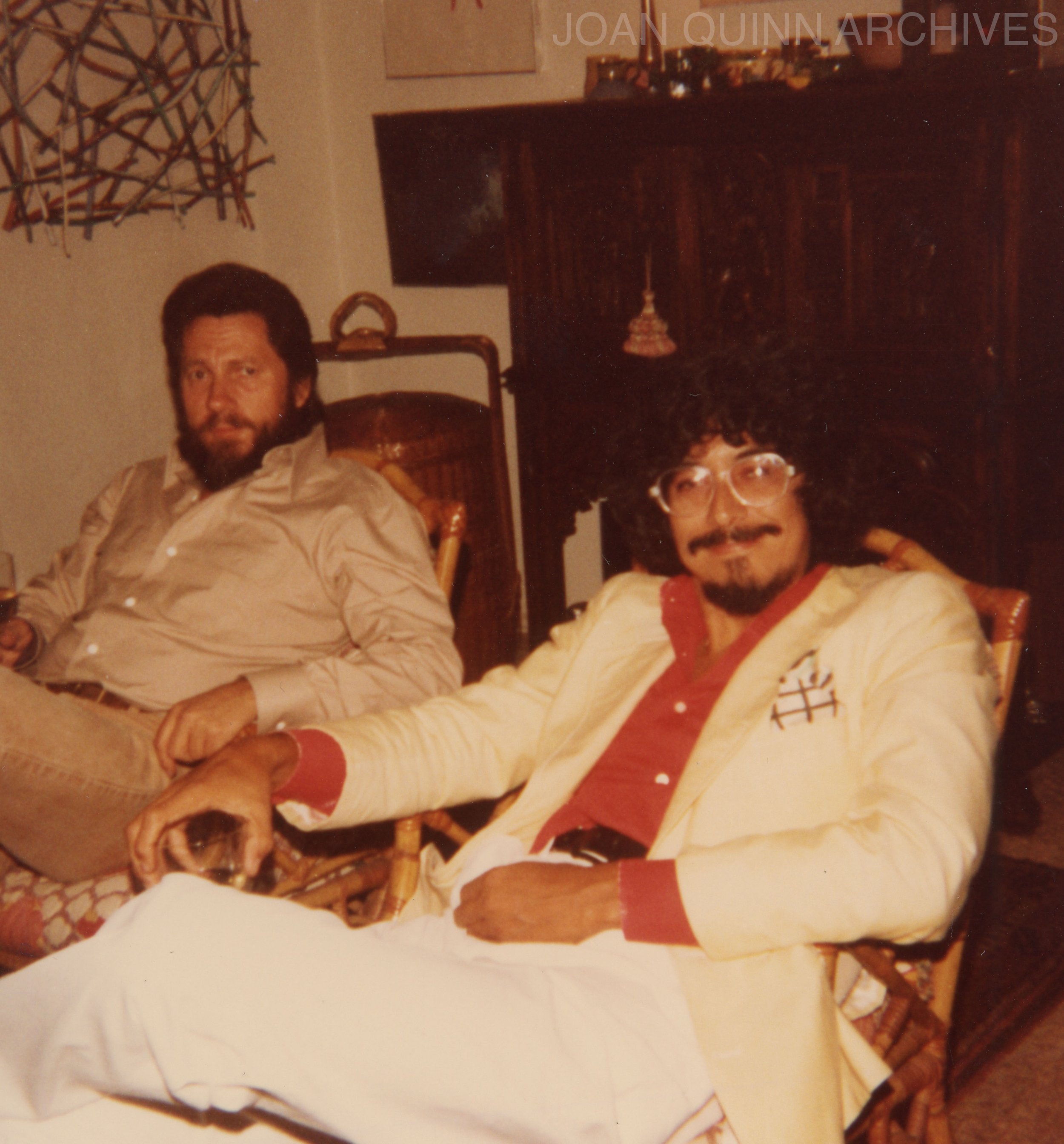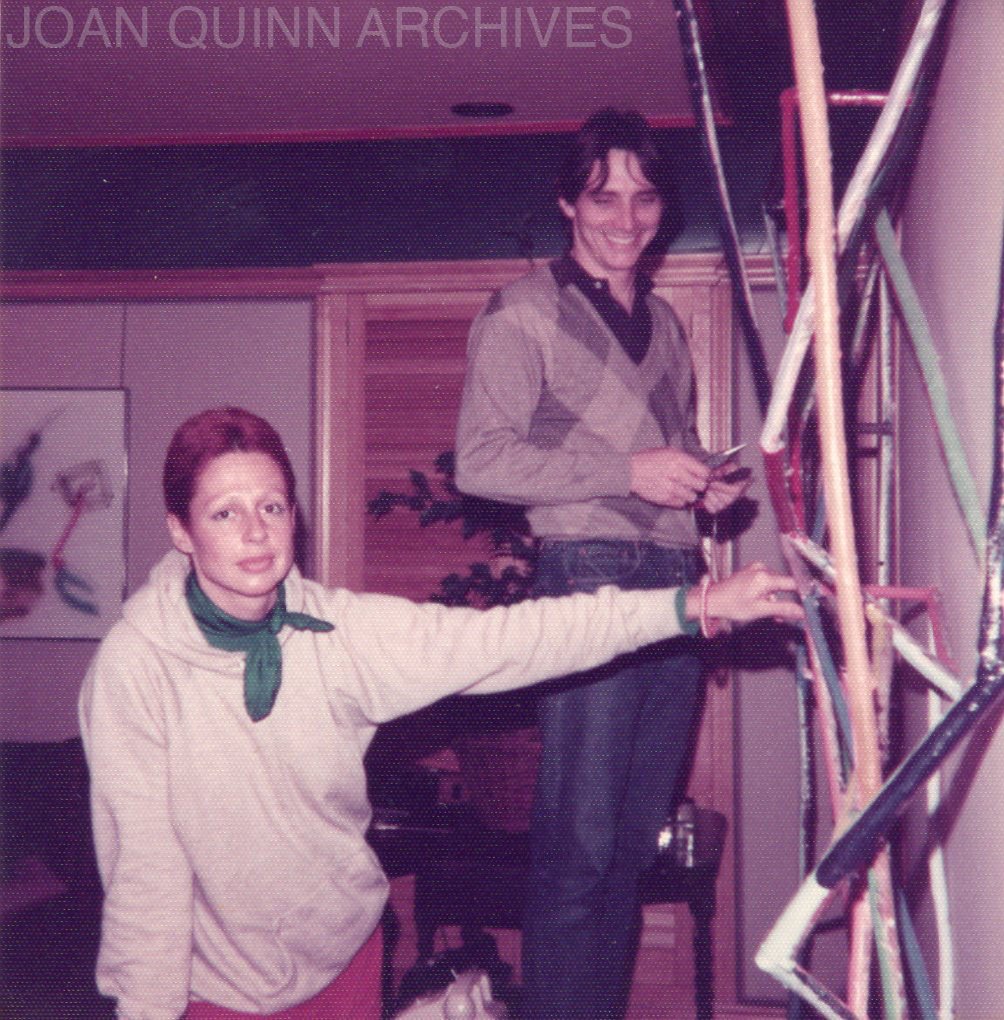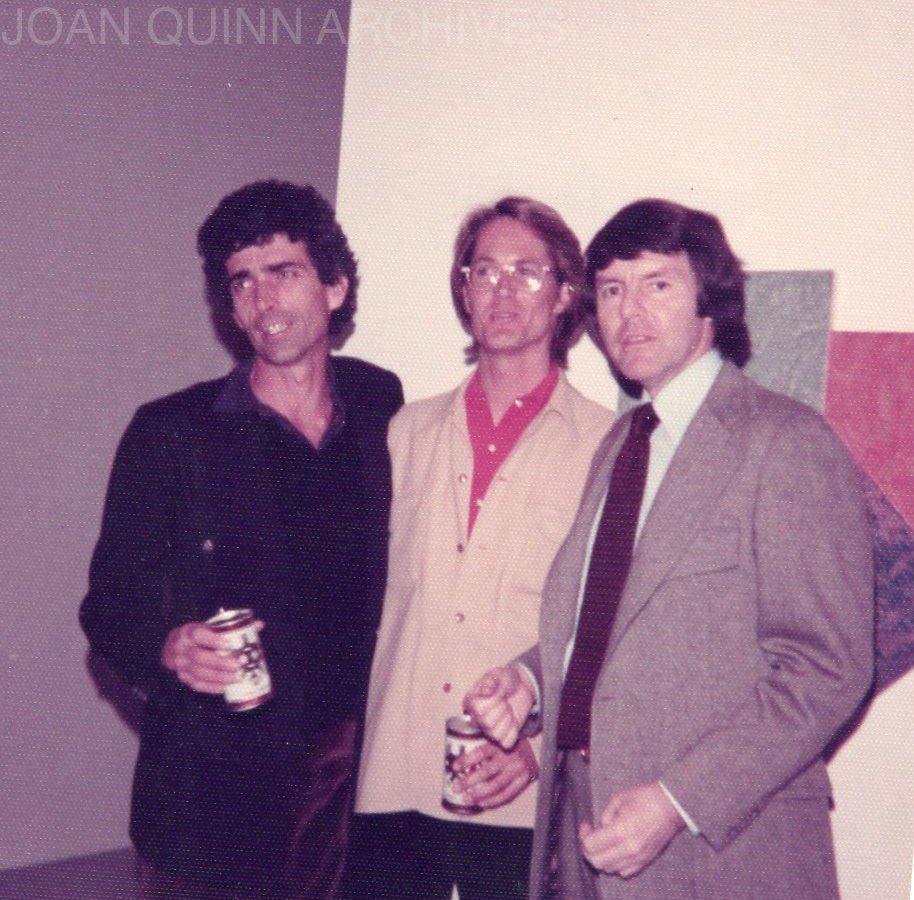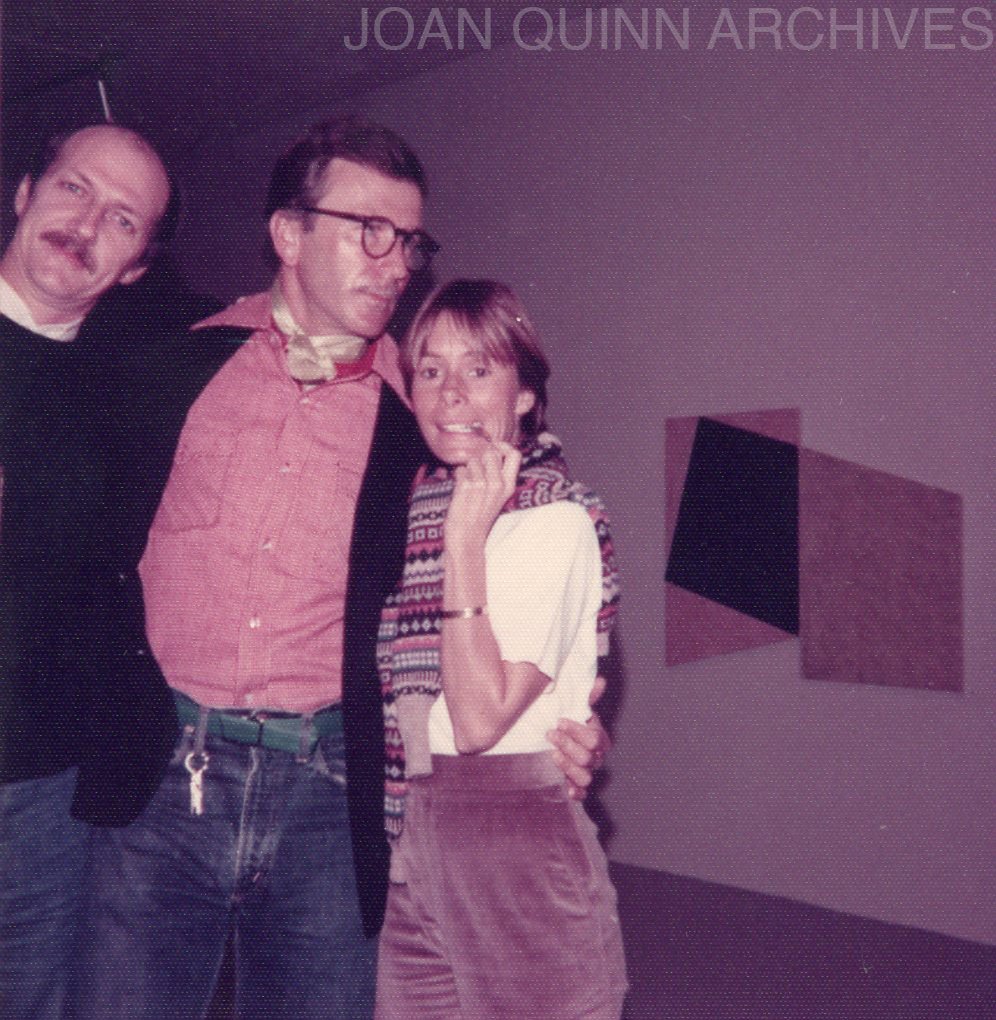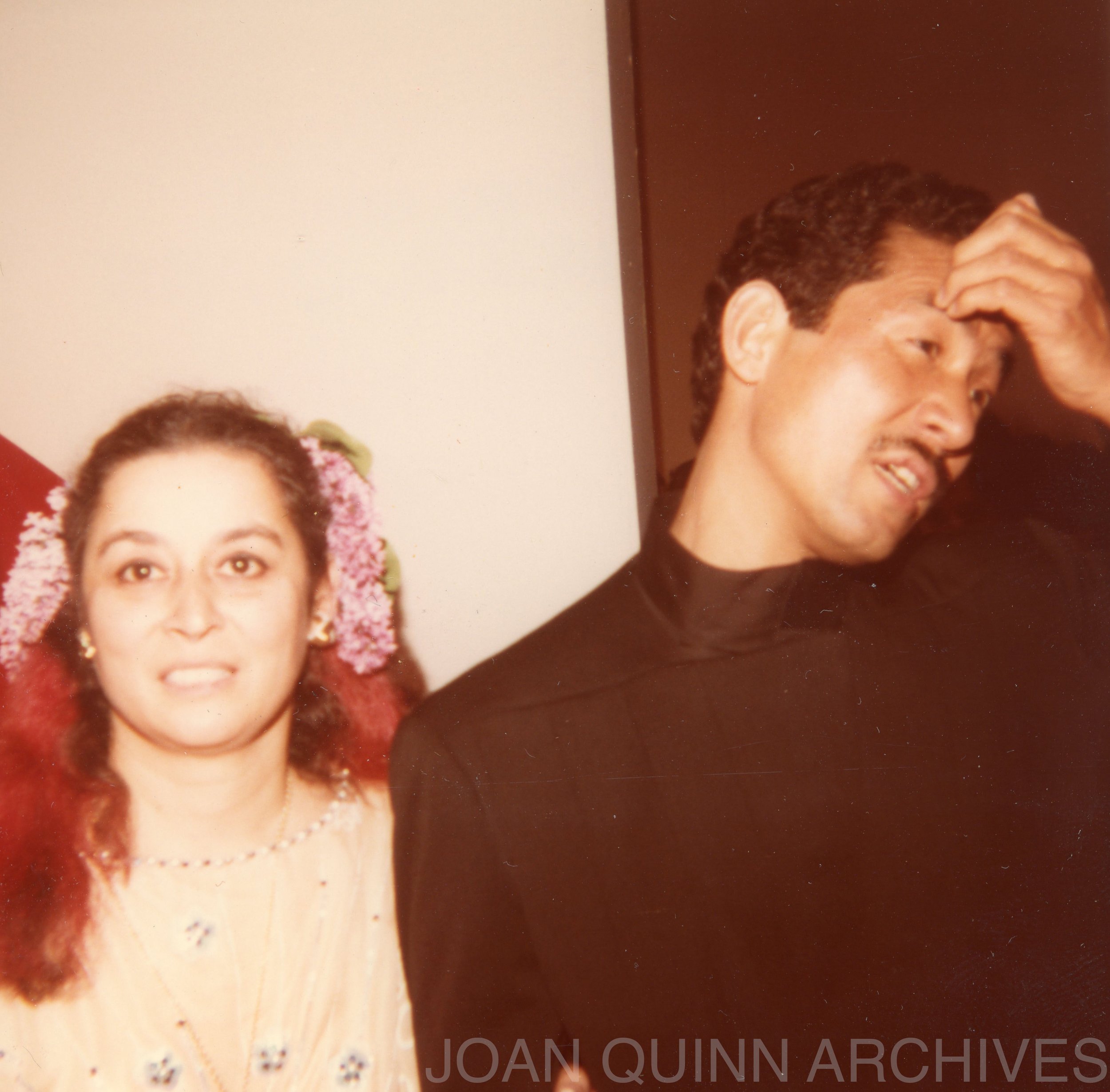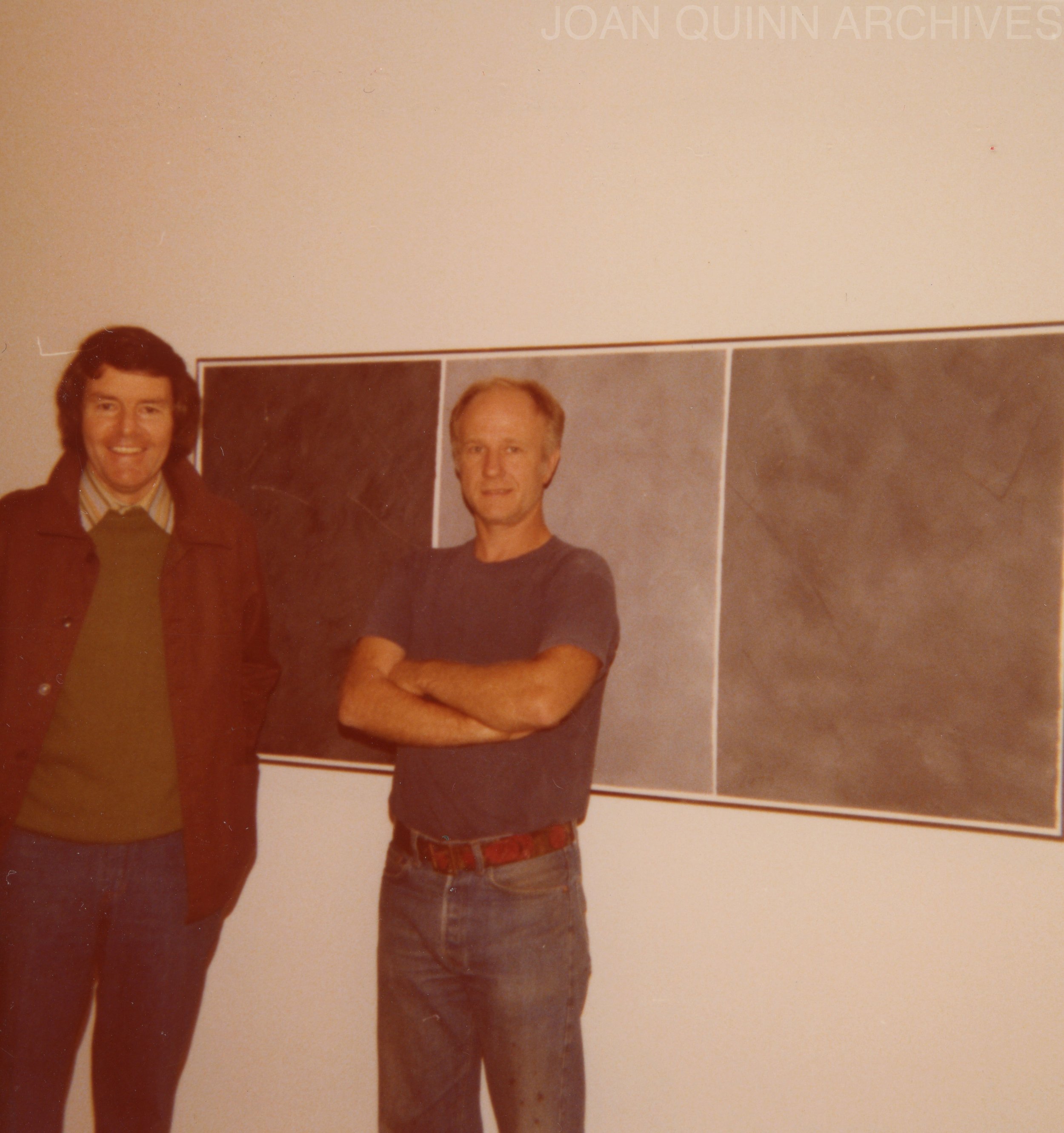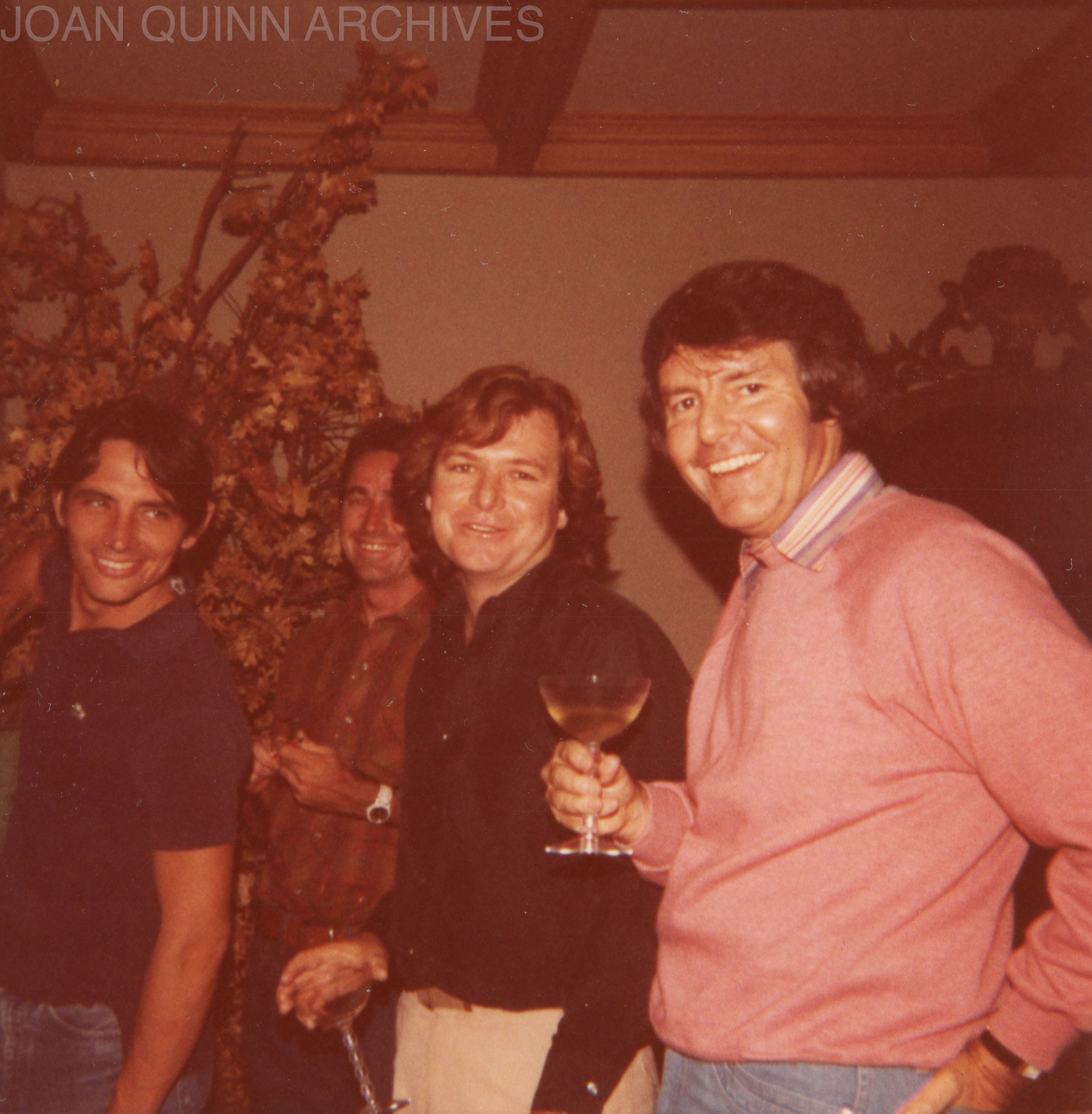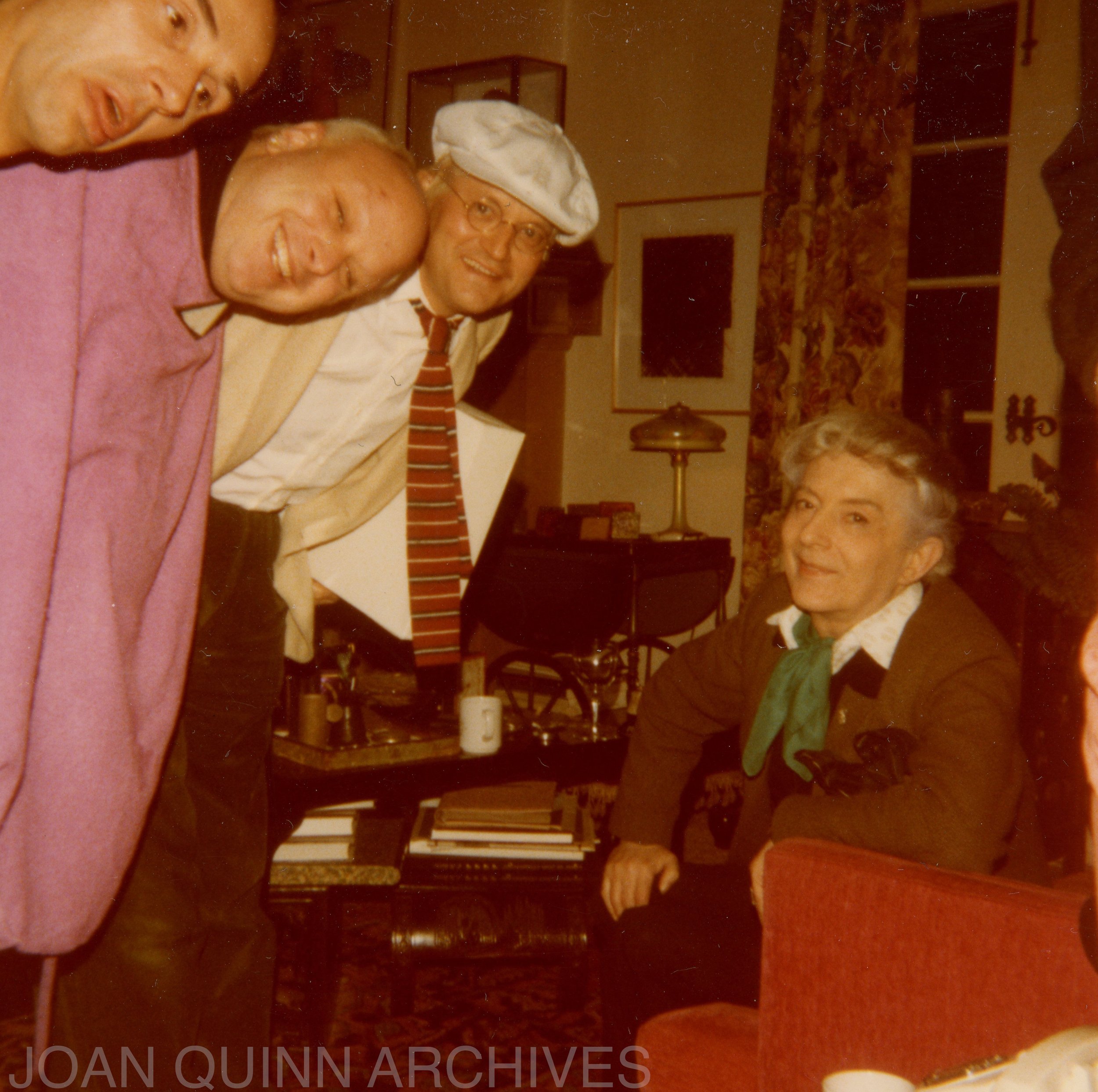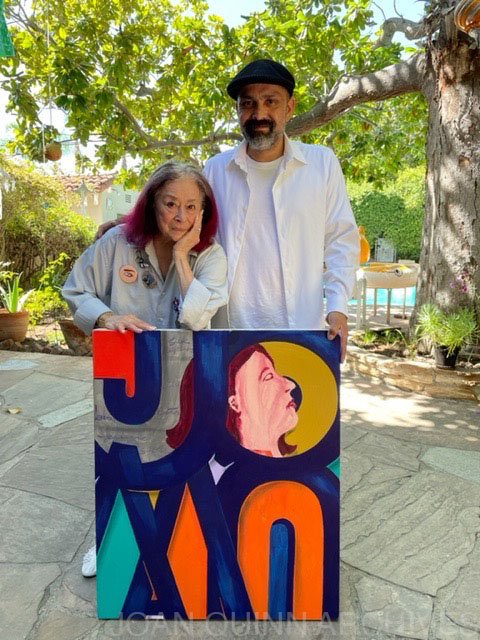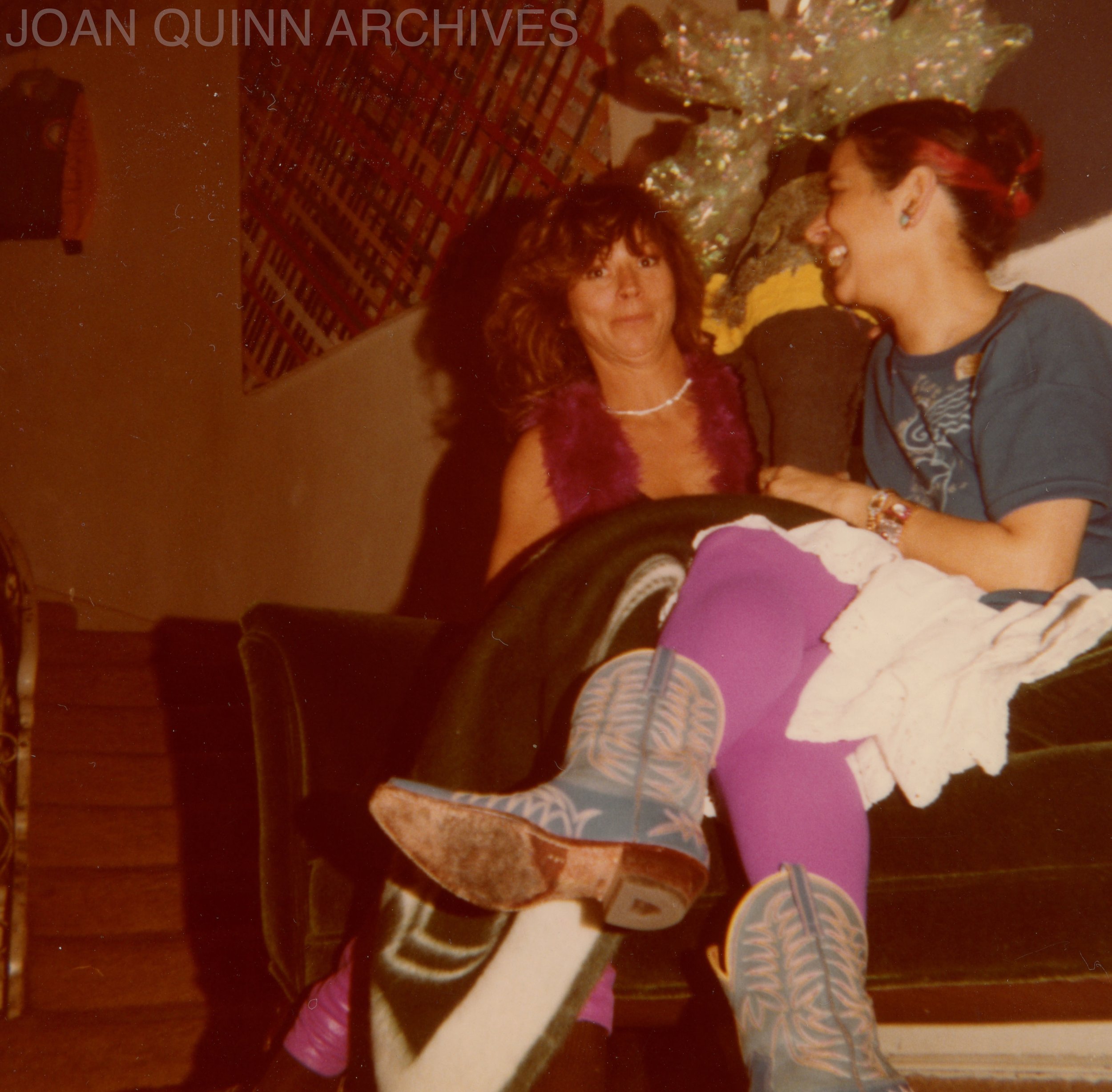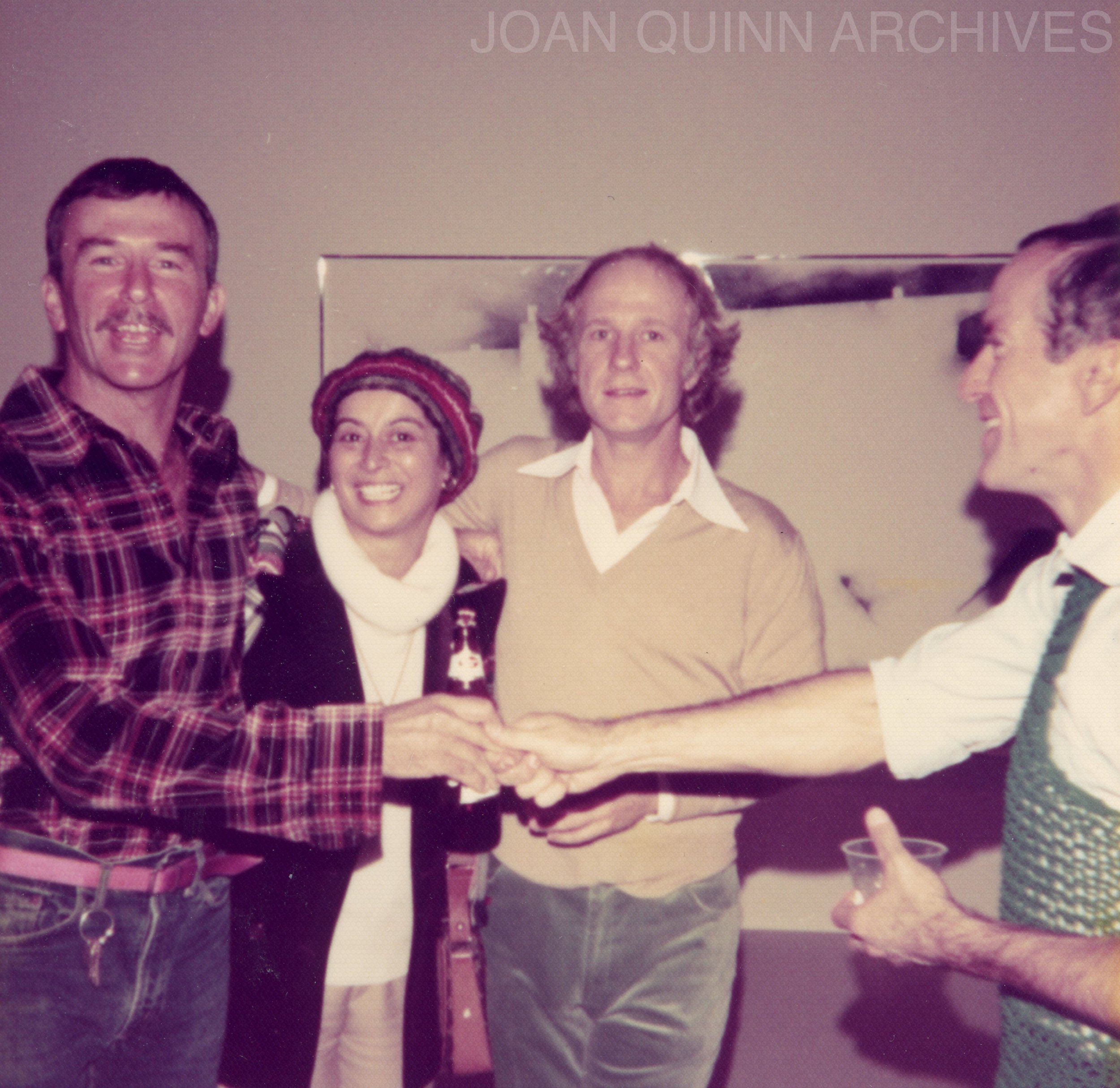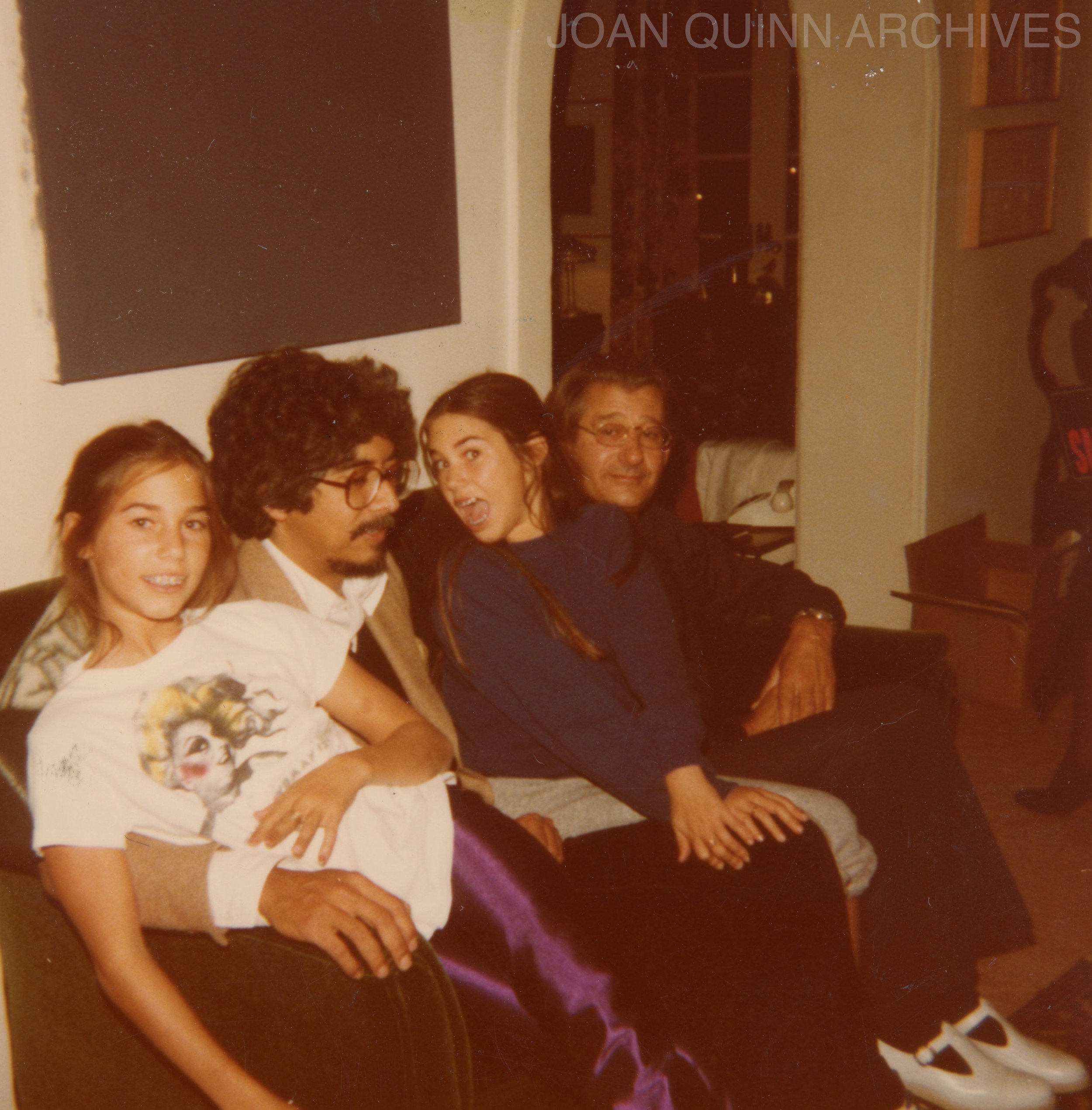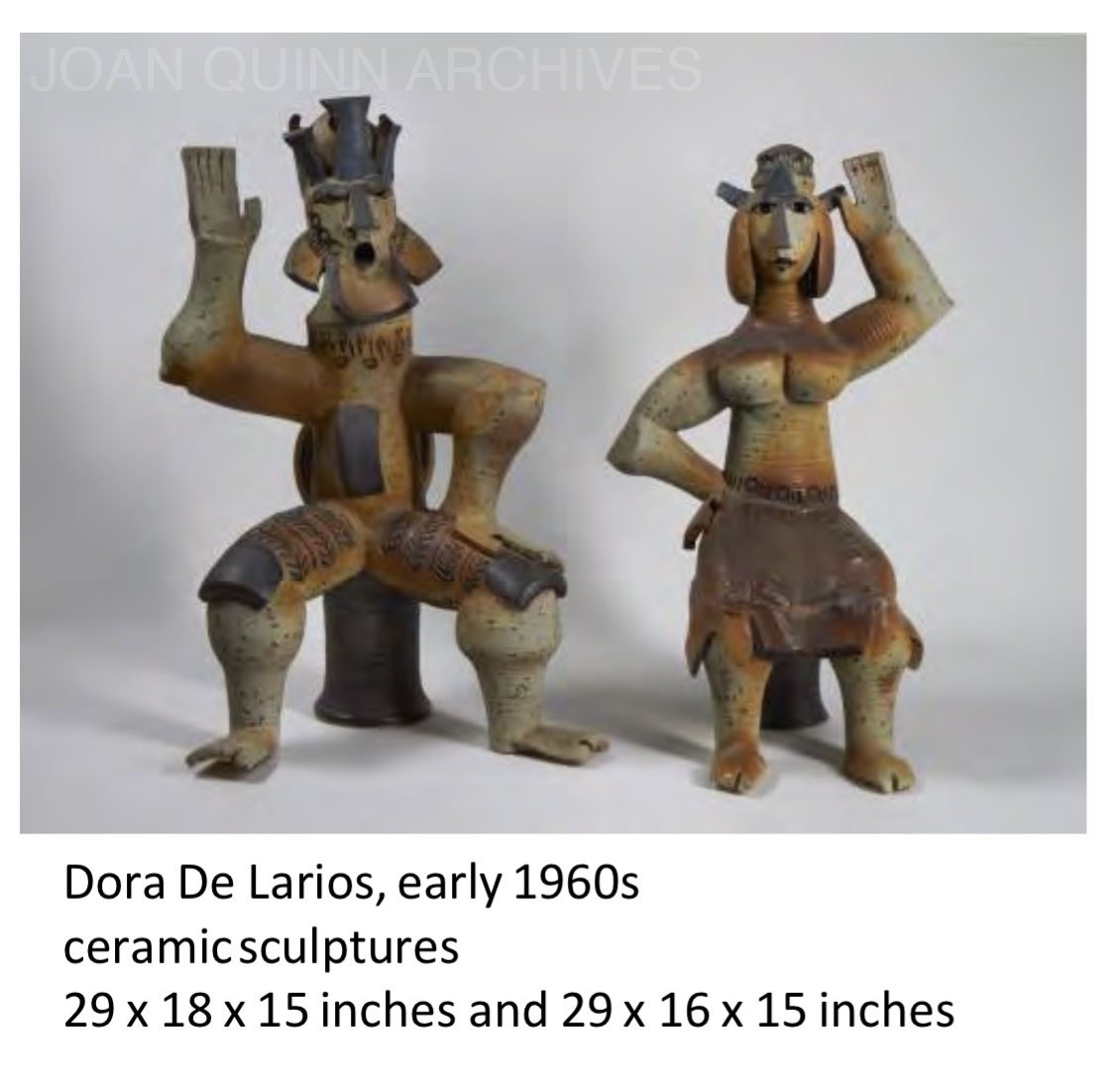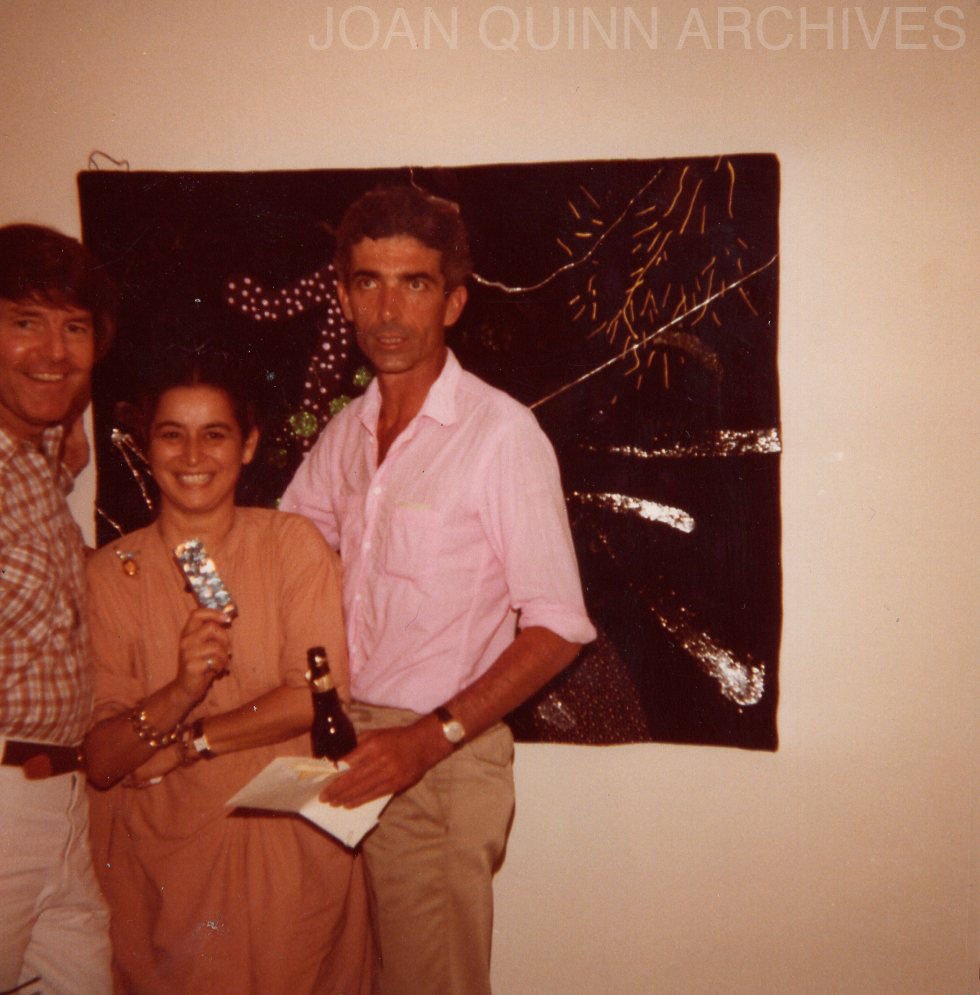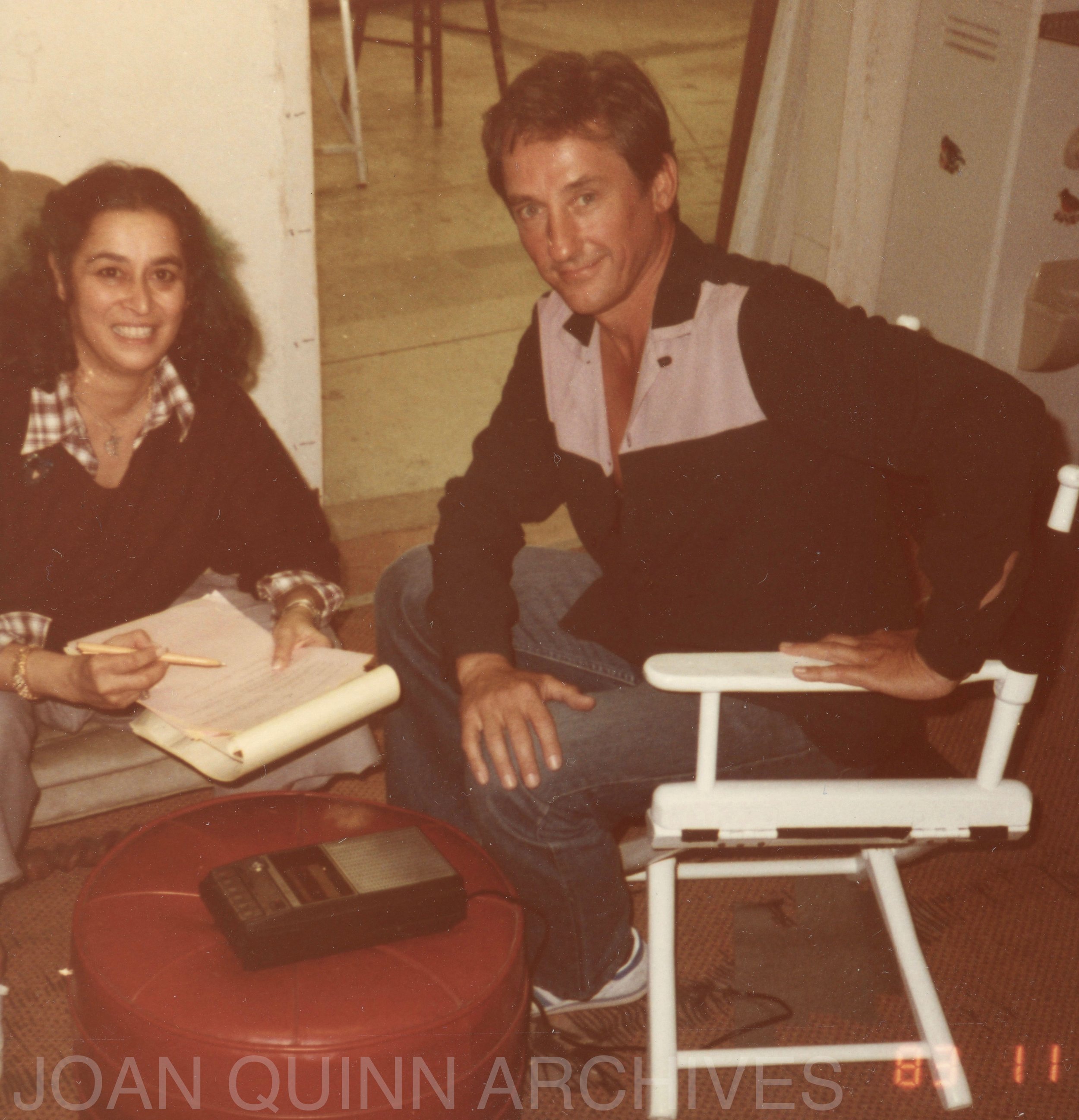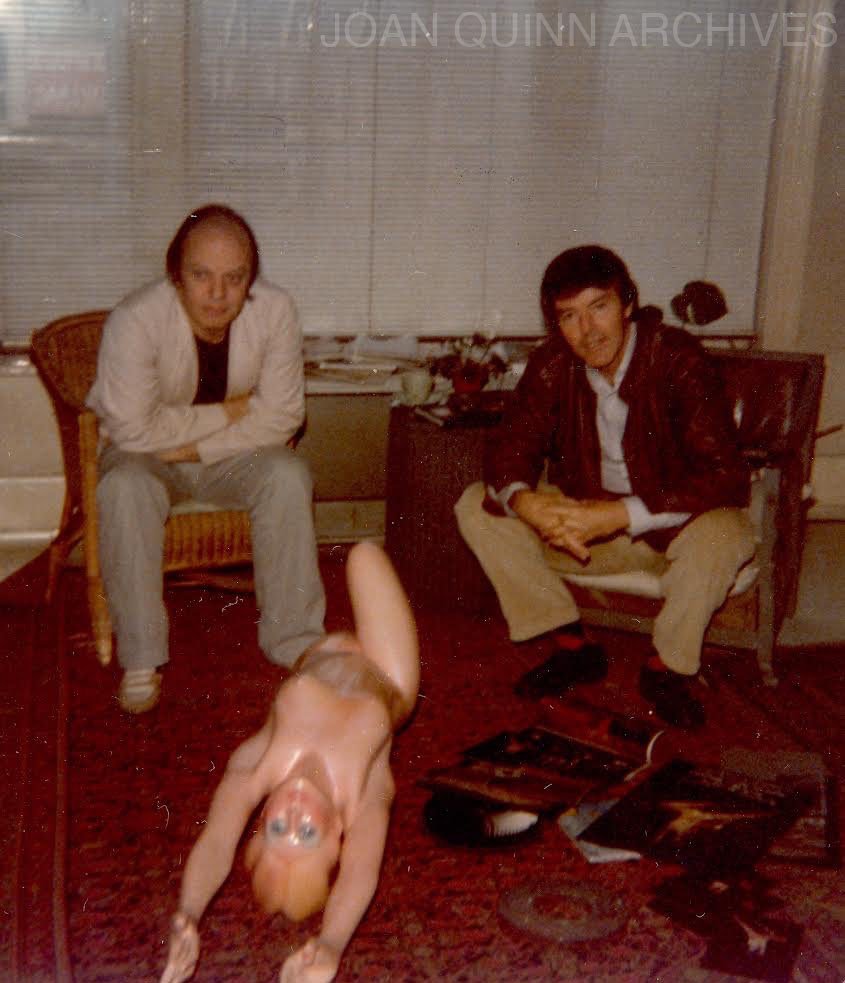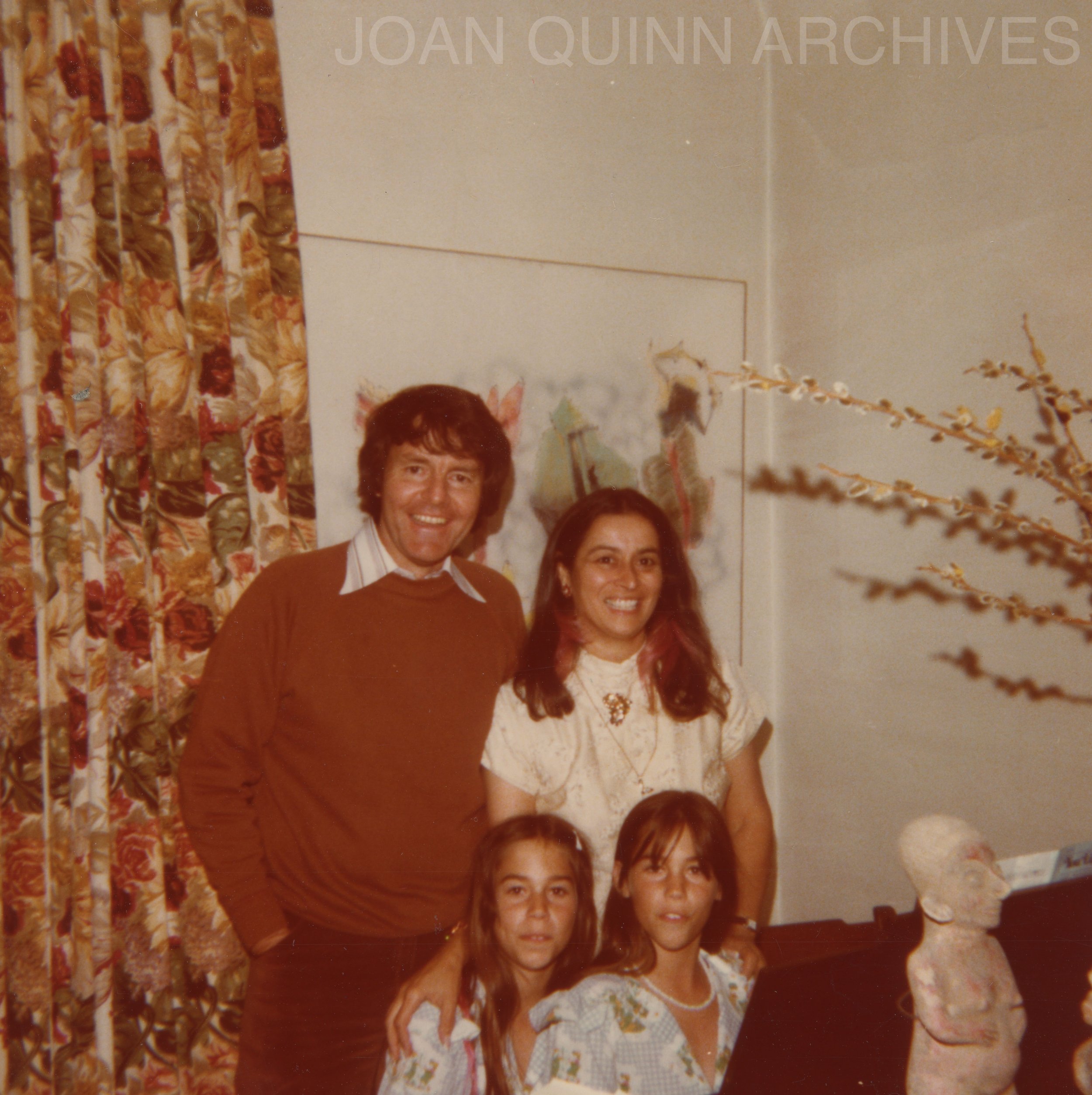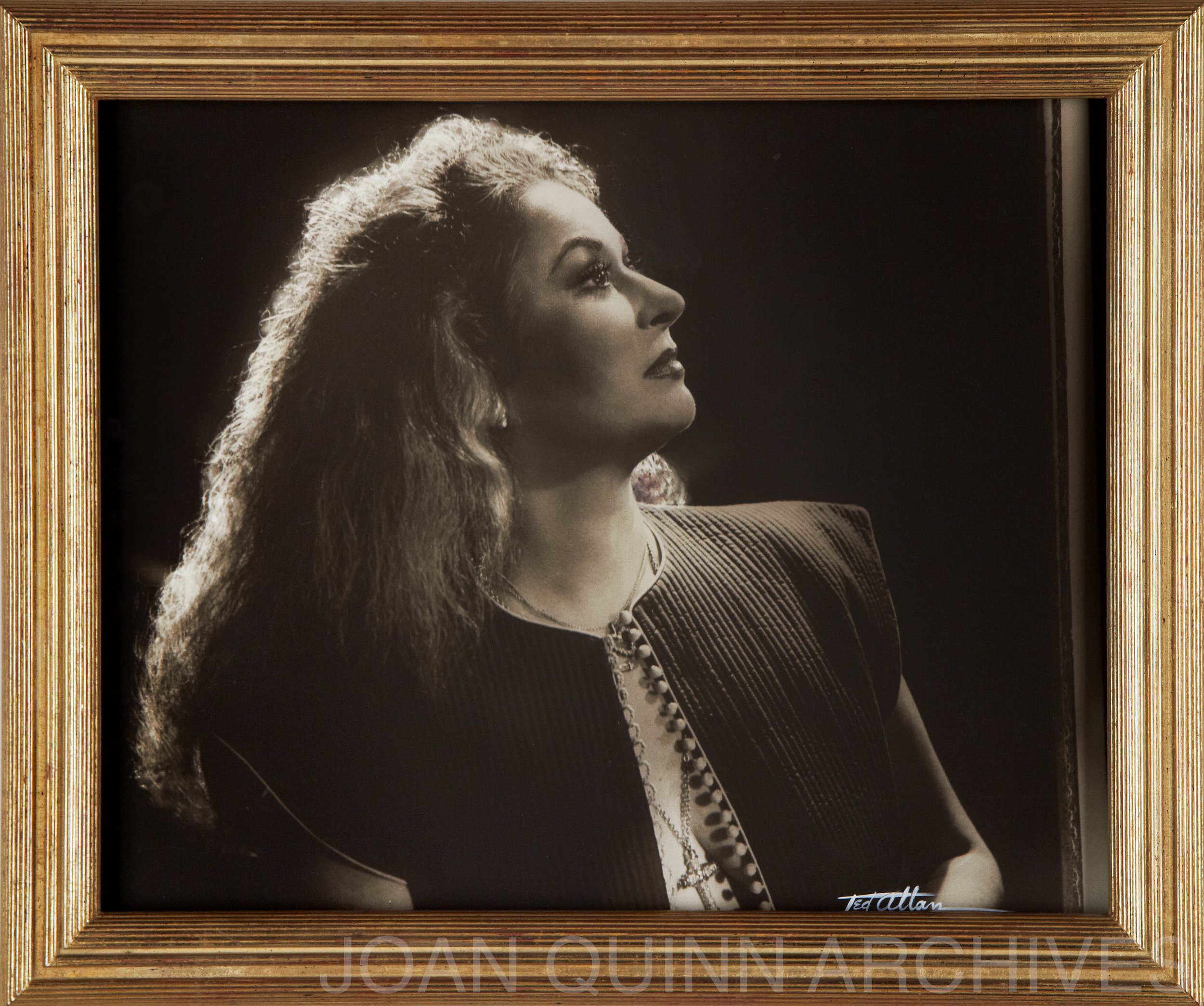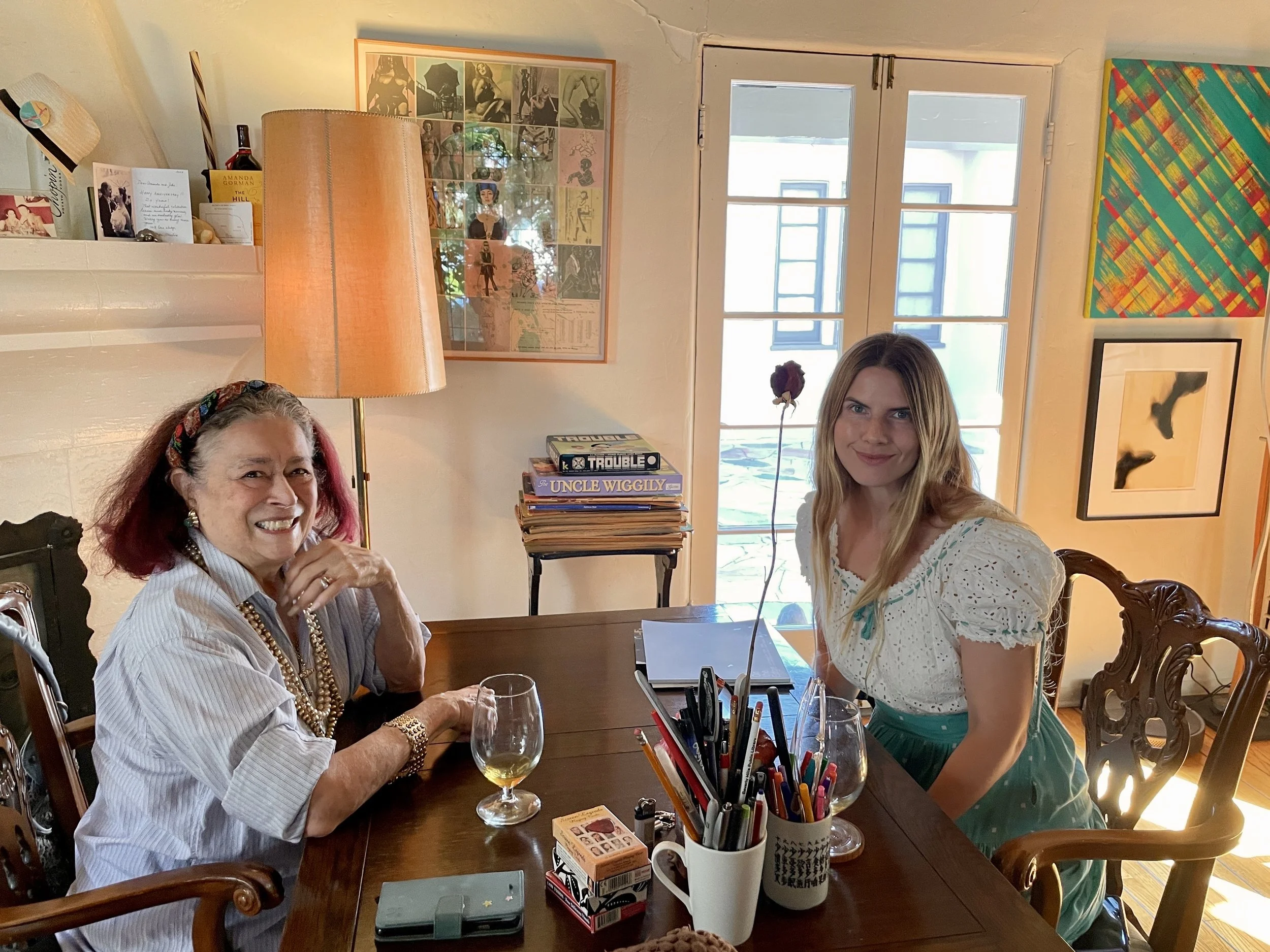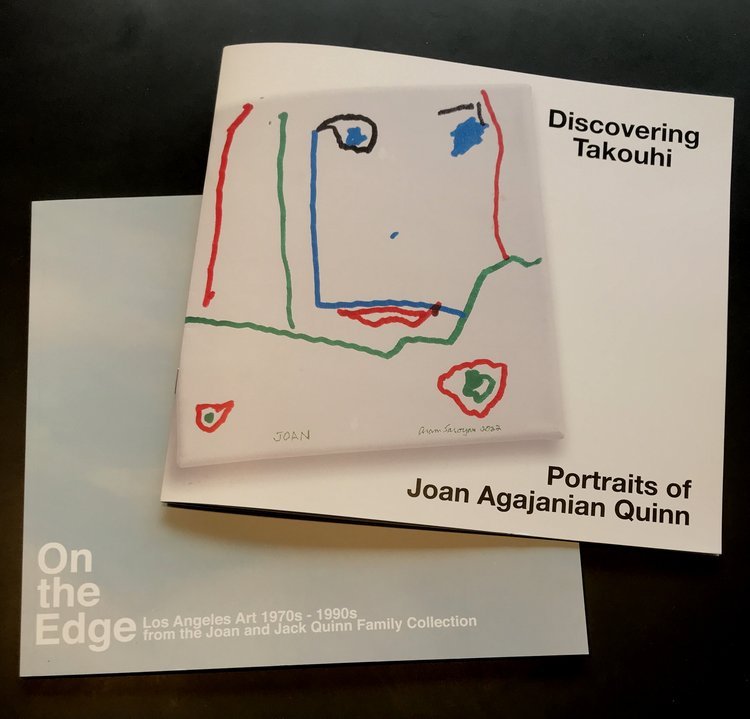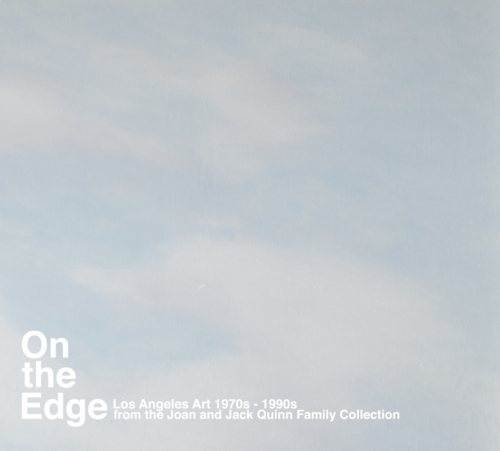Episode 32: Joan Agajanian Quinn
In addition to the podcast, I now have a Substack newsletter called Sighs and Whispers, which covers many of the same themes. You should sign up! I send out one free newsletter a week and one paid—all financial support of the newsletter allows me the time to write the newsletter, make this podcast, and do my Instagram, so please do consider becoming a paid subscriber.
In September I visited LA and had the wonderful opportunity to interview the art collector, journalist, editor, and muse Joan Agajanian Quinn. As it was in the middle of a heatwave and Joan’s house has no air conditioning, we met at the home of one of her daughters—a magical place with every surface covered with artwork collected by the family.
Joan by George Hurrell, 1985.
Perhaps more than any other resident, Joan Quinn has single-handedly contributed to Los Angeles becoming an art capital. Some artists from her circle (like Ed Ruscha) might have more global renown, but Joan’s actions as a collector and promoter of arts and artists have helped form and amplify the LA art scene. Her passion and collecting zeal made her a muse for artists—what started as some artist friends painting and sculpting her portrait in the seventies, has now grown into a collection of over 300 portraits of Joan—by everyone from Helmut Newton to the classic Hollywood photographer George Hurrell, it is a completely peerless accumulation. One Chicana street artist even painted Joan as the patron saint of the arts.
Born in Long Beach in 1936, Joan was the daughter of Joshua Christopher Agajanian, a prominent Armenian-American race car promoter. She grew up in Los Angeles where her entrée into the art world was a middle school friendship with Dora De Larios, later an acclaimed ceramicist. Everywhere she went—whether working part-time in a department store or studying education at USC—Joan met young artists, just starting out in their careers. She began purchasing their works as a way of supporting her friends; after her marriage to the lawyer Jack Quinn in 1961, the support expanded. Jack provided essential law and contract advice to artists and dealers, while Joan began introducing their artist and lawyer friends to stimulate sales of artworks. The Quinn’s parties became legendary.
Joan’s devotion to the arts shines through in everything she does—from the way she outfits herself to the décor of her home, a place filled to the brim with art and some of the many portraits done of her. At Andy Warhol’s behest, in the late 1970s, she became the West Coast editor of Interview magazine. While the role required her to do everything from wrangling Hollywood celebrities to hosting dinner parties, it also provided her a larger platform from which to promote her artist friends to the world. Though Joan left Interview following Warhol’s death in 1987, she has continued to write and edit. She was society editor at the Los Angeles Herald Examiner and later the West Coast editor of Condé Nast Traveler and House & Garden.
Zandra Rhodes and Joan at the Otis/Parsons student designer awards. Published in WWD, May 29, 1984.
In 1981 she became a member of the California Arts Council (she retired after 16 years in 1997); at the same time, Joan also began to explore curating. Among the exhibitions she worked on were one on the fashion designs of Zandra Rhodes in 1981 and one on Issey Miyake in 1983. In addition to creating most of her wardrobe, these designers were her friends. Meeting Rhodes in the early 1970s alerted Joan to a world of creative dressing—a way of using clothes to express her individuality, her own art form.
Again at Warhol’s urging, Joan started a public access show in the mid-1980s. The first show, Westcoasting, paired Joan with a co-host, but the subsequent shows, Joan Quinn ETC and The Joan Quinn Profiles were created and led by Joan. In 2015, she was asked to host a talk show for Beverly Hills Television called Beverly Hills View, which continued to air until the beginning of the pandemic. As the intro to Joan Quinn ETC states, “for the next half hour, Joan will bring you inside news and views on society, art, films, and the exhilarating worlds of these multi-faceted people”—interviewing artists and creatives, Quinn shared her enthusiasm and passion for the arts with her viewers. Luckily for us, many of these interviews are available on her Youtube page, Joan Quinn Profiles. It is a veritable treasure trove for researchers and anyone interested in the arts of the last 35 years—artists, architects, designers, directors, actors, dancers and more sit down for 10-30 minute long conversations that sprawl and sweep across all different subjects.
Divine and the Quinn family, 1979.
The Quinn’s provided artists and creatives with a home and a warm family environment. The drag queen Divine would sleep on the couch and babysit the Quinn’s twin daughters. Many became frequent dinner guests or travel companions. Joan and Jack were married until his death in 2017; their 56-year marriage is a testament to their love of each other, their family and the arts.
Now in her 80s, Joan is still actively engaging with artists and the art world. As we discussed, part of her collection was featured at an exhibition at the Bakersfield Museum of Art earlier this year. Called “On the Edge: Los Angeles Art 1970s – 1990s from the Joan and Jack Quinn Family Collection” and put on with assistance from the Wonderful Company, it featured work from many of Joan’s artist friends: Robert Mapplethorpe, Jean-Michel Basquiat, David Hockney, Ed Ruscha, Zandra Rhodes, Larry Bell, Frank Gehry, Ed Moses, Helmut Newton, Billy Al Bengston, Antonio Lopez and many more. With sponsorship from the JHM Foundation, the exhibition is now on view at the Armenian Museum of America in Watertown, Massachusetts, where it has been extended until January 31st, 2023.
Joan and I, September 5, 2022.

